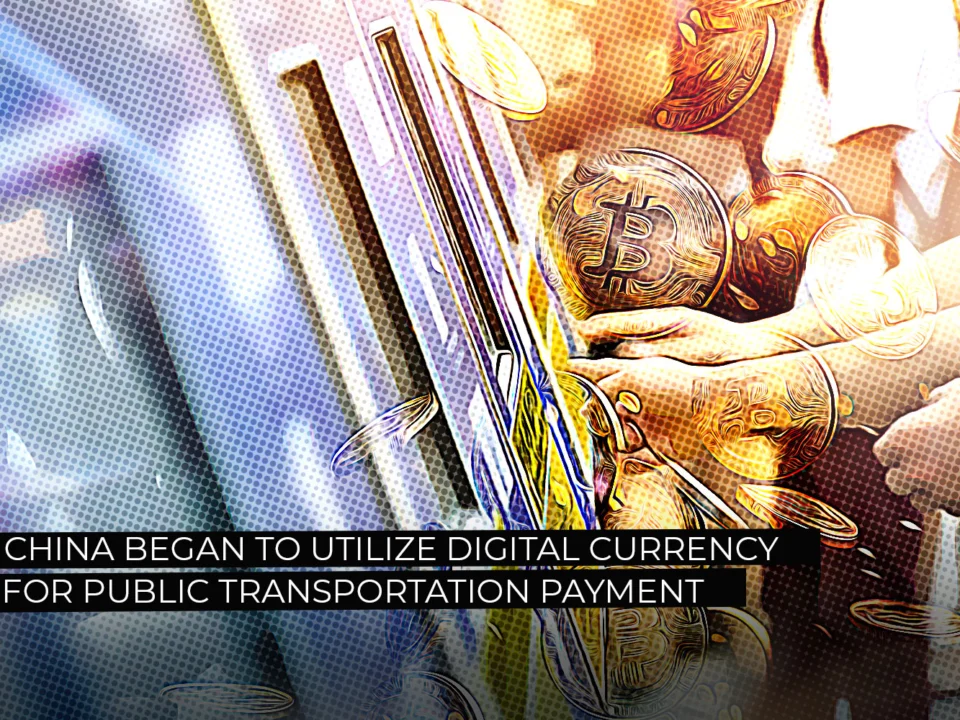China is setting a new standard for the future of public transportation payments by integrating digital currency into its systems. Commuters can now enjoy the convenience and efficiency of cashless transactions, enhancing their travel experience. This adoption of digital currency is not just a shift in payment methods but a significant step towards a more modernized and streamlined public transit system. As this innovative approach continues to develop, it holds the potential to overcome various challenges and transform public transportation on a global scale.
How Digital Currency Is Revolutionizing Public Transportation in China

Digital currency is rapidly changing the landscape of public transportation in China. This groundbreaking technology is making daily commutes more convenient and efficient for millions of commuters.
Key Benefits of Digital Currency in Public Transportation:
- Convenience: Commuters can now pay for their rides using digital wallets, eliminating the need for cash or physical tickets.
- Speed: Transactions are processed almost instantly, reducing queues and wait times at stations.
- Cost Efficiency: Reduced reliance on physical currency lowers operational costs for transit authorities.
- Security: Enhanced security protocols in digital currency transactions help prevent fraud and theft.
Digital currency not only simplifies the payment process but also integrates seamlessly with existing payment systems. For instance, bus and metro cards can link with digital wallets, streamlining the experience further.
Comparison: Traditional Payment vs. Digital Currency
| Aspect | Traditional Payment | Digital Currency |
|---|---|---|
| Convenience | Limited | High |
| Transaction Speed | Moderate | Instant |
| Operational Cost | High | Lower |
| Security | Vulnerable | Enhanced |
In summary, the adoption of digital currency in China’s public transportation system offers numerous advantages. It promises a faster, safer, and more cost-effective way for commuters to travel around the bustling cities. Moving forward, digital currency has the potential to completely reshape how public transit operates, benefiting both users and service providers alike.
Implementation and Adoption by Commuters
To integrate Digital Currency into public transportation, China has taken significant steps. Several cities, including Shenzhen and Suzhou, have launched pilot programs, allowing commuters to pay for bus and metro rides using Digital Currency. This move aims to enhance convenience and streamline payment processes.
Key Implementation Steps:
- Digital Wallets: Commuters must download a digital wallet app sanctioned by the People’s Bank of China.
- Seamless Transactions: Upon boarding, commuters scan QR codes using their digital wallet to deduct the fare.
- Increased Points of Sale: Public transportation authorities have installed new terminals compatible with digital payments across various routes.
Adoption by Commuters:
Commuters have responded positively to this innovation, appreciating the ease of use and enhanced security. Surveys indicate that:
- 50% of users experience faster boarding times.
- A majority report reduced reliance on physical cash and cards.
- Many highlight improved transaction transparency.
Comparison Table:
| Feature | Digital Currency | Traditional Payment Methods |
|---|---|---|
| Speed | Fast and Instant | Often slower, especially with cash |
| Security | High due to encryption | Variable, depending on the method |
| Convenience | Highly convenient, one app for all | Requires multiple methods (cash, card) |
In conclusion, China’s implementation of Digital Currency in public transportation is not only functional but also widely embraced by commuters, leading to a smoother and more efficient travel experience.
Future Prospects and Challenges of Digital Currency in Public Transit
Digital Currency offers both promising prospects and potential challenges for public transit in China. Here are a few key points to consider:
Prospects:
- Enhanced Efficiency: Digital Currency can streamline fare collection, reducing the need for physical cash and speeding up transactions.
- Real-Time Data: Transit operators can gain real-time insights into traveler patterns, allowing for better service planning and management.
- Eco-Friendly: Reduces the need for paper tickets, contributing to environmental sustainability.
Challenges:
- Cybersecurity Risks: There’s a pressing need to bolster security measures to protect against cyber-attacks and fraud.
- Public Awareness: Educating the public and ensuring widespread understanding and acceptance of Digital Currency is critical.
- Infrastructure Costs: Upgrading existing systems to support Digital Currency can entail considerable expenses.
In summary, while Digital Currency holds great promise for revolutionizing public transportation in China, it demands significant attention to security, public education, and infrastructural investment.
Frequently Asked Questions
What is the significance of China using digital currency for public transportation payments?
China’s adoption of digital currency for public transportation payments marks a significant step in the country’s transition to a more digital economy. It reflects the government’s commitment to enhancing financial technology and making transactions more efficient for everyday activities. This move is also part of a broader effort to reduce cash dependency and promote the usage of the digital yuan, thereby streamlining public services and improving user convenience.
How does the digital currency payment system work for public transportation?
The digital currency payment system for public transportation involves using China’s central bank digital currency (CBDC), the digital yuan, through mobile applications. Passengers can load their digital wallets with the digital yuan and then use QR codes or Near Field Communication (NFC) technology to pay for their fares directly through their smartphones. This system is designed to be seamless and user-friendly, providing a quick and efficient way for commuters to pay.
What are the benefits of using digital currency for public transportation?
Using digital currency for public transportation offers multiple benefits, including increased transaction speed, enhanced security, and reduced reliance on physical cash. It also simplifies the fare collection process and minimizes the risk of counterfeit currency. For consumers, it offers the convenience of easy and contactless payments. For the authorities, it provides better tracking and management of fare revenues and usage data.
Are there any privacy concerns with using digital currency for public transportation?
While digital currency transactions are generally considered secure, there are some privacy considerations, as digital transactions can be tracked and monitored by the authorities. However, the Chinese government has assured users that measures are in place to protect their privacy while using the digital yuan. Transaction data is reportedly anonymized and encrypted to prevent unauthorized access, safeguarding users’ personal and financial information.







